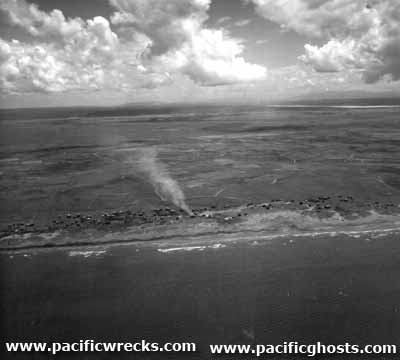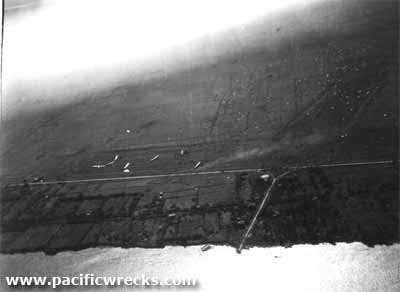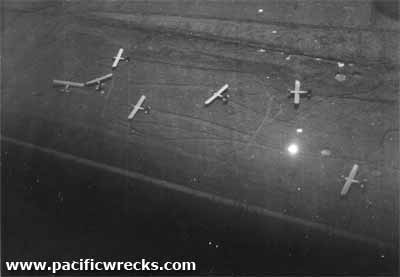|
|
|
|
| Missing In Action (MIA) | Prisoners Of War (POW) | Unexploded Ordnance (UXO) |
| Chronology | Locations | Aircraft | Ships | Submit Info | How You Can Help | Donate |
|
   17th TRS June 23, 1945 |
Location Lat 18° 21' 13N Long 121° 38' 37E Aparri is located at 6' / 2m above sea level on the eastern side of the mouth of the Cagayan River at the northern end of the Cagayan Valley in Cagayan Province in the Cagayan Valley Region (Region II) in northern Luzon in the Philippines. Also spelled Apparri. To the south is Calamaniugan and beyond Dugo. Wartime History On December 10, 1941 the Japanese Army "Tanaka Detachment" landes at Aparri in conjunction with another landing at Gonzaga. Afterwards, the Appari area was occupied by the Japanese Army and was developed as a logistic area supporting the Japanese advance. Occupied by the Japanese until late June 1945. Starting in the middle of January 1945 attacked by American until August 1945. American mission against Aparri January 14, 1945–August 7, 1945 In late February 1945, elements of the Japanese Army 103rd Infantry Division occupied the Aparri area including two regiments of infantry and two battalions of artillery under the command of Divisional Headquarters. Defending Japanese 14th Area Army commander General Tomoyuki Yamashita anticipated the U.S. might conduct an airborne assault in the Cagayan Valley. By the end of February 1945, Filipino guerrillas under U.S. Army Forces in the Philippines (Northern Luzon) USAFFE-NL controlled the area to the west of Aparri. At one time U.S. Army General Krueger considered mounting an amphibious landing at Aparri in late May 1945, but the idea was never implemented. By late June 1945, Filipino guerrillas from the U.S. Army Forces in the Philippines (Northern Luzon) USAFFE-NL led by Colonel R. W. Volckmann Company B with Blackburn's guerrillas liberated the Aparri area including Aparri Airfield. On June 23, 1945 C-47s drop paratroopers from the 11th Airborne Division 511th Parachute Infantry Regiment (511th PIR) at Calamaniugan near Aparri and the mouth of the Cagayan River without incident. Soon afterwards, C-46 Commandos towing seven CG-4 gliders manned by the 188th Glider Infantry Regiment (188th GIR) also land without incident. This attack was the first and only time gliders were used in combat in the Pacific Theater. On the ground, the paratroopers linked up with a large force of Filipino guerrillas. Their combined force advanced southward until making contact with the U.S. Army 37th Division. Aparri Airfield (Aparri I, Aparri II) Prewar airfield at the northern tip of Luzon, occupied by the Japanese until late June 1945. References U.S. Army in World War II - The Fall of the Philippines: Chapter VI: The First landings page 98 "Altogether, the Japanese planned six advance landings: Batan Island, Aparri, Vigan, Legaspi, Davao, and Jolo Island" U.S. Army in World War II - Triumph in the Philippines: Chapter XXIV Northern Luzon pages 450, 453, 454 U.S. Army in World War II - Chapter XXVIII Action at the Northern Apex pages 543, 545 U.S. Army in World War II - Chapter XXIX Pursuit in Northern Luzon pages 560, 561, 562, 566, 568, 570, 571, 572 The 11th Airborne World War II - The 188th Glider Infantry Regiment Unit History "The last operation was Operation Aparri on June 23, 1945. 7 gliders were used, to drop troops, for the first time in the Pacific Theater. This was the end of the Luzon Campaign." National WWII Glider Pilots Association - Operation Gypsy Task Force: Appari Mission (June 23, 1945) Contribute
Information Last Updated
|
Map Fallingrain Map Mapcarta |
| Discussion Forum | Daily Updates | Reviews | Museums | Interviews & Oral Histories |
|